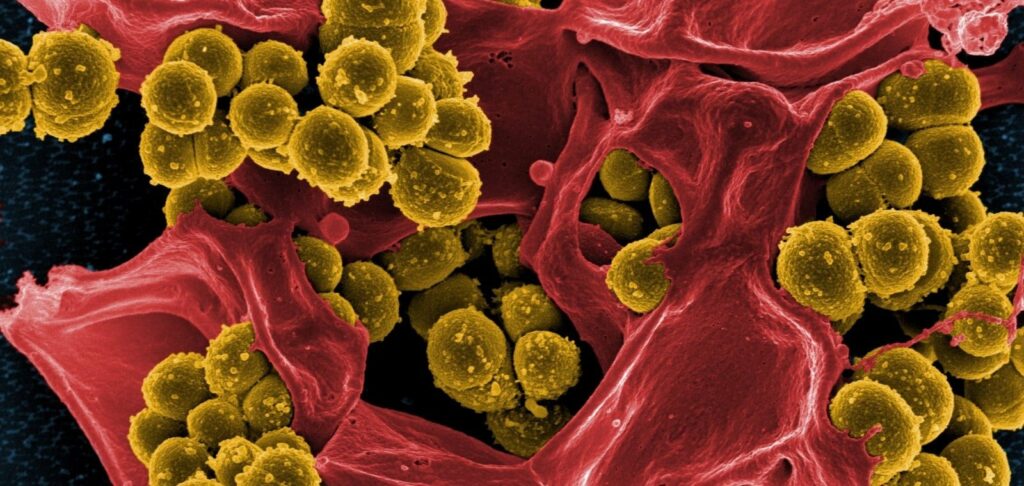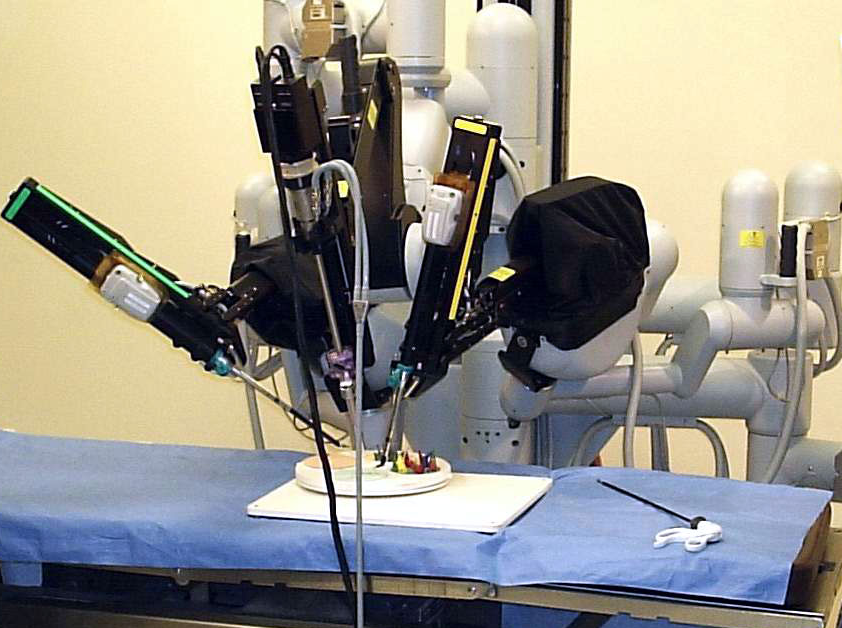
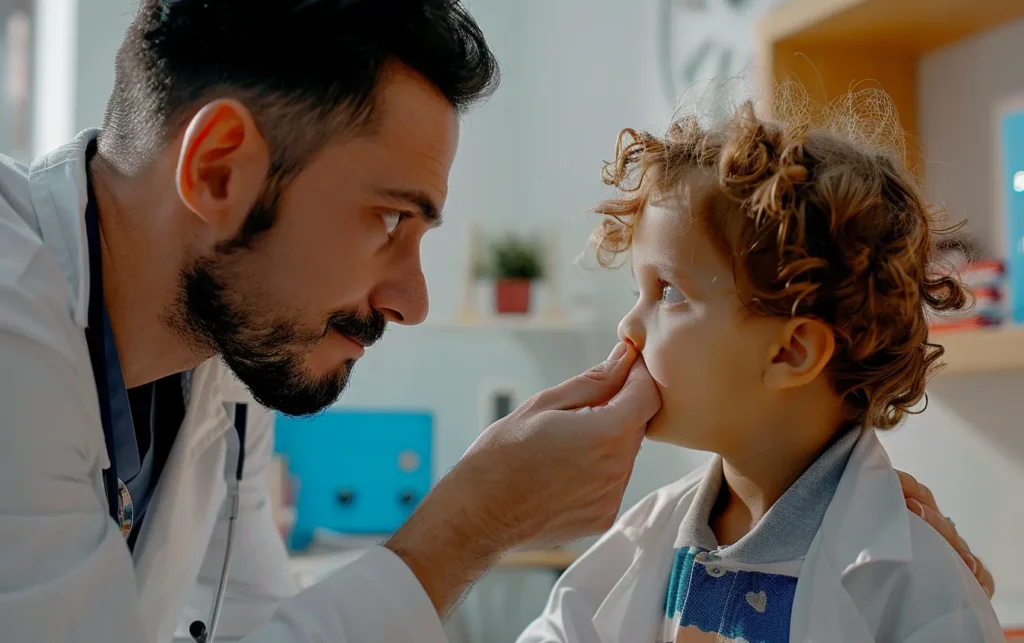
Роль аденоидов
Аденоиды часто ошибочно принимают за множество тканей, но на самом деле они представляют собой одну миндалину, расположенную в задней части горла (глотки).
Она входит в группу миндалин, называемую кольцом Вальдейера, к которой также относятся:
- Две небные миндалины
- Две трубные миндалины
- Язычная миндалина
Все эти миндалины, включая аденоиды, играют важную роль в иммунной системе организма и синтезе клеток крови (кроветворении).
Они состоят из лимфоидной ткани, которая содержит высокие концентрации лимфоцитов (разновидность лейкоцитов) и антител.
Эти компоненты работают вместе, чтобы защитить организм от вредных вирусов и бактерий, которые могут проникнуть в верхние дыхательные пути.

Нормальное увеличение миндалин у детей раннего возраста
Увеличение миндалин у детей раннего возраста является нормальным явлением, поскольку они в раннем возрасте участвуют как в местном, так и в общем иммунитете.
Около 30 лет назад роль миндалин еще не была полностью изучена, поэтому большинству детей удаляли небные миндалины и аденоиды, если они воспалялись, разрастались или инфицировались.
Этот стереотип до сих пор существует среди некоторых бабушек, дедушек и даже врачей.
Факторы, способствующие развитию аденоидита
Глоточная миндалина (аденоиды) и небные миндалины имеют на своей поверхности множество борозд и щелей, которые позволяют микроорганизмам из носа и рта легко закрепляться там и расти
Это может привести к воспалению миндалин, известному как тонзиллит или аденоидит.
Несколько распространенных инфекций могут способствовать развитию аденоидита:
- Острые респираторные вирусные инфекции (ОРВИ), поражающие дыхательную систему, такие как простуда или грипп.
- Стрептококковая ангина (тонзиллит) – бактериальная инфекция, вызываемая стрептококком группы А.
- Острый инфекционный ринит – воспаление носовых ходов, часто вызываемое вирусными инфекциями.
Эти инфекции создают среду, которая способствует воспалению и разрастанию аденоидной ткани.
Однако одного лишь присутствия микробов недостаточно, чтобы вызвать аденоидит.
Другие факторы, такие как иммунная реакция ребенка, общее состояние здоровья и факторы окружающей среды, также играют роль в развитии этого состояния.

Поясняет Сергей Безшапочный, профессор Полтавского медицинского университета:
«Аденоидная ткань расположена там, где проходит основной дыхательный поток. Очень важно, чтобы этот поток воздуха был постоянным. Если ребенок из-за ринита перестает дышать носом и переходит на ротовое дыхание, в носоглотке, где такой струи нет, начинается разрастание аденоидов. И родственники малыша зачастую виноваты в том, что не обращают внимания на то, как он дышит».
Симптомы и виды аденоидита
Аденоидит можно классифицировать в зависимости от его продолжительности и тяжести:
- Острый: кратковременное воспаление аденоидов.
- Подострый: длительное воспаление.
- Хронический: стойкое воспаление, которое сохраняется в течение длительного периода.
Симптомы аденоидита могут различаться в зависимости от тяжести и стадии заболевания.
Выделяют три степени увеличения аденоидов:
- Первая степень: аденоиды занимают до 1/3 носоглотки.
- Вторая степень: аденоиды занимают от 1/3 до 2/3 носоглотки.
- Третья степень: аденоиды занимают более 2/3 носоглотки.
Как отмечает доктор Безшапочный,
«если рот ребенка постоянно открыт при наличии аденоидных разрастаний, то пыль, холодный воздух, микробы и аллергены попадают в дыхательные пути без нейтрализации в полости носа. Воспаление начинается в глотке,поднимается в носоглотку и распространяется по верхним дыхательным путям, что приводит к бесконечному лечению«.

Родители должны знать о следующих основных симптомах аденоидита:
- Постоянный насморк. Аденоидит часто проявляется длительным насморком.
- Дыхание через рот. Затруднение носового дыхания, вызванное гипертрофией аденоидной ткани, приводит к дыханию в основном через рот. Длительный хронический аденоидит при ротовом дыхании может вызвать изменения лицевого скелета, приводящие к стойким нарушениям речи.
- Ночной храп и беспокойный сон. Это распространенные симптомы аденоидита.
- Утренний кашель. Вызван слизью, стекающей из носа по задней стенке глотки в ночное время.
- Снижение слуха и рецидивирующий средний отит. Могут возникать вследствие механической непроходимости слуховых труб, перекрытых аденоидными разрастаниями, даже при гипертрофии 1-2 степени, если аденоиды расположены вблизи устьев слуховых труб, отвечающих за вентиляцию среднего уха. Если ребенок плохо слышит, то может постоянно переспрашивать или смотреть мультфильмы на повышенной громкости.
- Утомляемость и апатия. Постоянное кислородное голодание головного мозга, особенно при хроническом аденоидите, может вызвать утомляемость и апатию. Ребенок может отставать от сверстников в умственном и физическом развитии.
Распознавание этих симптомов имеет решающее значение для раннего выявления и надлежащего лечения аденоидита, чтобы предотвратить осложнения и обеспечить правильное развитие ребенка.
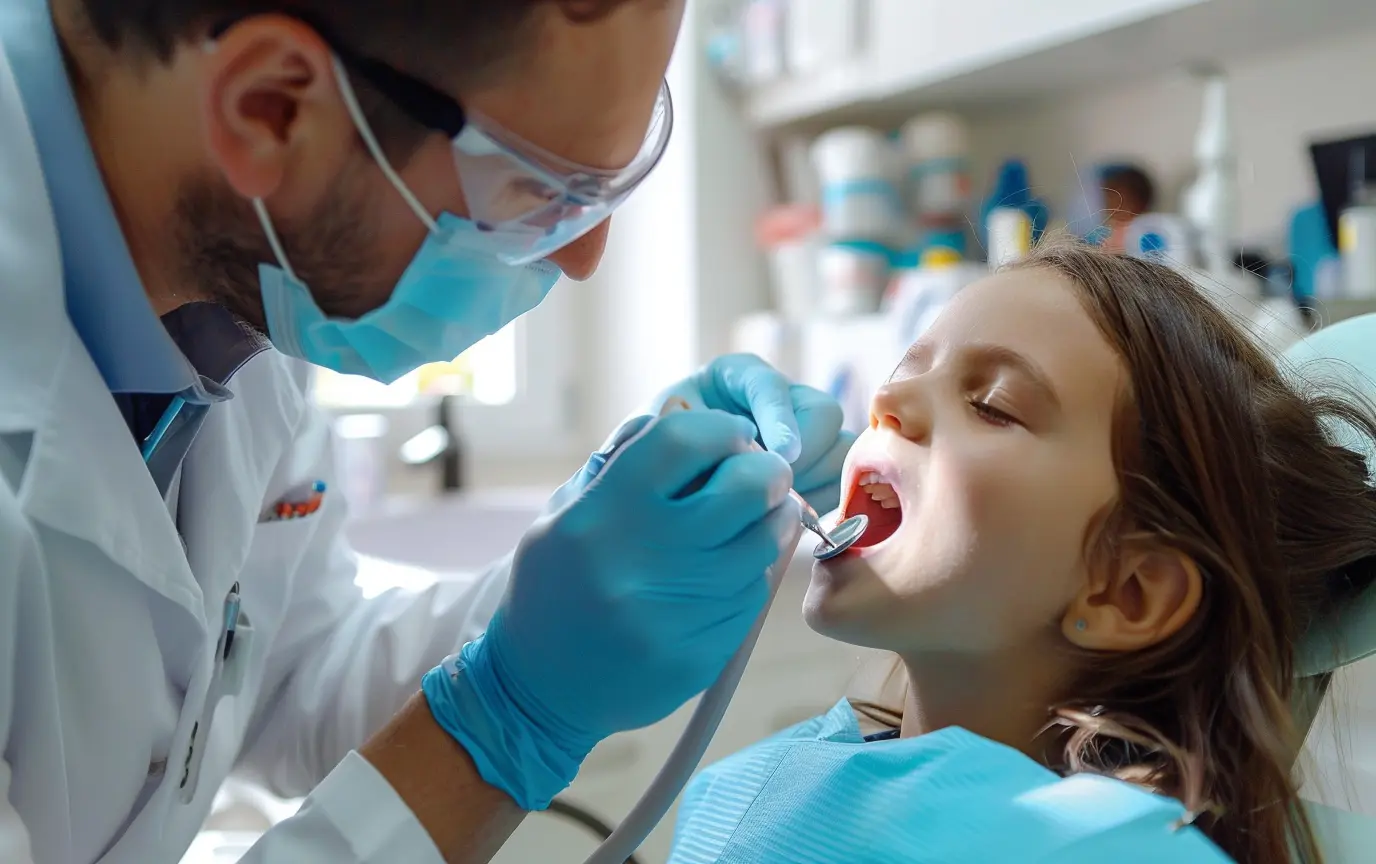
Подходы к лечению аденоидита
Хирургическое удаление аденоидов – не выход
Решение об удалении аденоидов хирургическим путем следует принимать взвешенно, учитывая индивидуальное особенности, преимущества и риски
Аденоидэктомия (хирургическое удаление аденоидов) может выполняться с использованием традиционных и более современных эндоскопических или лазерных методов, но чаще всего в ней нет необходимости.
еских или лазерных методов, но чаще всего в ней нет необходимости. В некоторых случаях медицинские работники могут выбрать хирургическое вмешательство, поскольку оно более прибыльное и требует меньше времени и усилий по сравнению с консервативными методами лечения.
Консервативное лечение предполагает регулярное наблюдение за состоянием ребенка и при необходимости внесение корректив.
Однако существуют определенные показания, при которых может потребоваться аденоидэктомия:
- Полная блокировка носового дыхания из-за увеличенных аденоидов.
- Рецидивирующий средний отит (инфекции среднего уха), вызванный закупоркой отверстий евстахиевой трубы аденоидами.
Важно отметить, что удаление аденоидов не обязательно решает проблему аденоидита. После операции возможен рецидив, особенно у детей, склонных к аллергии. В некоторых случаях аллергические реакции могут даже ухудшиться после аденоидэктомии.
Доктор Безшапочный категорически против необоснованной аденэктомии, подчеркивая, что
«аденоиды у ребенка после полового созревания атрофируются сами собой. Они выполняют свою работу, а закончив ее, исчезают. Абсолютно недопустимо удалять аденоиды у ребенка, как и глоточные миндалины у взрослых, без строгих показаний к операции.»
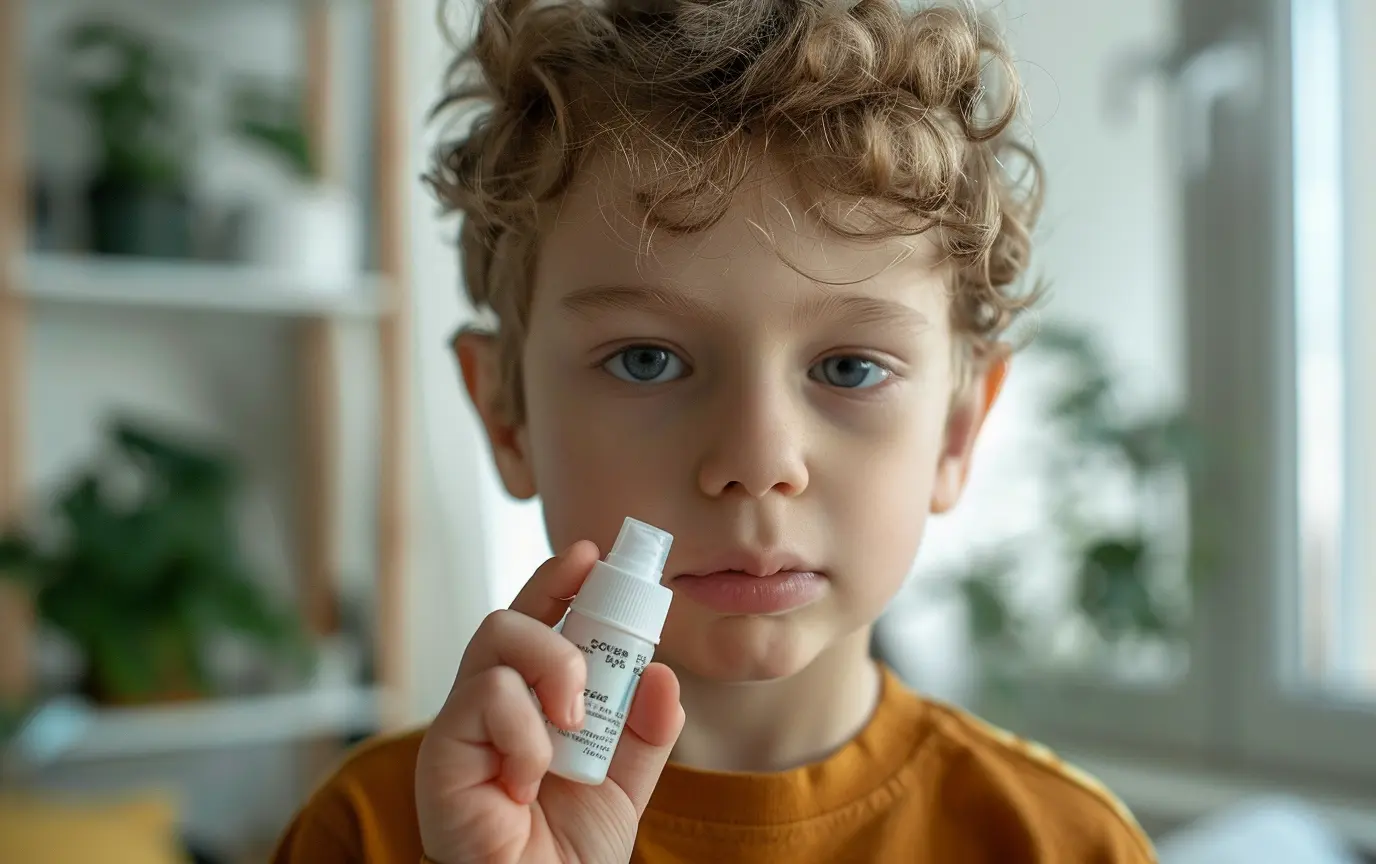
Цели консервативного лечения аденоидита
Консервативное лечение аденоидита направлено на уменьшение воспаления и повышение естественной защиты организма, особенно местной иммунной системы в носоглотке ребенка.
Этот подход включает использование лекарств, физиотерапии и изменения образа жизни.
Препараты для консервативного лечения:
- Местные антисептики помогают уменьшить количество вредных микроорганизмов на слизистых оболочках.
- Антибиотики используются для лечения бактериальных инфекций, которые могут способствовать развитию аденоидита.
- Кортикостероиды помогают уменьшить воспаление в аденоидах и окружающих тканях.
Помимо приема лекарств, полезно регулярное промывание носа спреем с морской водой (Хьюмер), которое помогает физически удалять возбудителей инфекций со слизистых оболочек.
Эту простую процедуру можно выполнять дома, она является эффективным способом поддержания гигиены носа.
Дополнительные методы лечения аденоидов
Консервативное лечение также включает различные нефармакологические подходы:
- Дыхательные упражнения. Помогают улучшить носовое дыхание и способствуют правильной дыхательной функции.
- Закаливание. Постепенное воздействие на организм ребенка прохладной воды, чтобы укрепить его иммунную систему и снизить вероятность инфекций.
- Прогулки на свежем воздухе. Улучшают здоровье органов дыхания и общее самочувствие.
- Климатотерапия. Пребывание ребенка на море или в горах оказывает благотворное влияние на его здоровье.
- Витаминные комплексы. Обеспечение ребенка достаточным количеством витаминов и минералов с помощью питания или приема диетических добавок поддержит его иммунную систему и поспособствует выздоровлению. Мы рекомендуем Zest Multivitamins.
Комбинируя эти различные консервативные подходы к лечению, врач стремится устранить основные причины аденоидита, укрепить естественную защиту ребенка и обеспечить долгосрочное здоровье органов дыхания, не прибегая к хирургическому вмешательству.

Фактор аллергии при лечении аденоидита
Педиатрам и родителям необходимо знать, что у многих детей аденоидит часто сочетается с аллергическими заболеваниями.
В Украине, России и Казахстане около 30% детского населения страдает аллергией. Такая высокая ее распространенность может осложнить диагностику и лечение аденоидита.
Когда глоточная миндалина (аденоиды) значительно увеличивается, это может привести к застою слизи в полости носа.
Скопившаяся слизь служит ловушкой для инородных частиц, таких как аллергены, вирусы и бактерии, которые попадают в носовые ходы с воздухом.
Эти частицы прилипают к слизистой и вызывают одновременно как инфекционные, так и аллергические воспалительные реакции.
В результате симптомы аденоидита могут быть очень похожи на симптомы аллергических состояний, что затрудняет определение точной причины воспаления.
Симптомы аденоидита и аллергии
Симптомы, общие для аденоидита и аллергических реакций:
- Заложенность и выделения из носа
- Храп и дыхание через рот
- Хронический кашель
- Боль в лице или головные боли
Чтобы точно диагностировать основную причину аденоидита, педиатры должны изучить историю болезни ребенка, провести тщательный медицинский осмотр и, возможно, назначить дополнительные анализы на аллергию или визуализирующие исследования.
Выявление аллергических состояний имеет решающее значение для разработки эффективного плана лечения, направленного как на инфекционный, так и на аллергический компоненты заболевания.
Как отмечает доктор Безшапочный, «термин «аллергия» недавно был изъят из обращения практически во всех странах, поскольку аллергия — это всего лишь разновидность воспаления. Раньше считалось, что аллергические реакции провоцируются повышенной секрецией гистамина, однако оказалось, что гистамин ответственен лишь за около 40% всех случаев аллергии. В механизмах реакций гиперчувствительности также участвуют лейкотриены, серотонин и др. Аденоидит как воспаление тканей носоглотки может быть связан как с инфекцией, так и с таким аллергическим процессом».
Сергей Пухлик, заведующий ЛОР-кафедрой Одесского национального медицинского университета, добавляет:
«Сегодня передовые врачи для лечения ряда воспалительных заболеваний, в том числе аденоидита, назначают не просто антигистаминные препараты, а применяют комплексную терапию несколькими препаратами, воздействующими на разные медиаторы реакций гиперчувствительности. К ним относятся современные ингаляционные кортикостероиды, такие как мометазона фуроат (Фликс), который снижает синтез лейкотриенов и тем самым обеспечивает выраженный местный противовоспалительный эффект»
Ключевые выводы об аденоидах и аденоидите
- Аденоиды являются нормальной частью иммунной системы ребенка и часто увеличиваются в размерах у малышей.
- Аденоидит может быть вызван сочетанием микробных факторов и дыхания через рот.
- Хирургическое удаление аденоидов не всегда является решением проблемы и может привести к рецидиву или обострению при наличии аллергических реакций.
- Консервативное лечение направлено на уменьшение инфекционного и аллергического воспаления и укрепление местного иммунитета путем приема ряда лекарств, промывания носа и изменения образа жизни.
- Индивидуальный подход с учетом конкретного состояния ребенка и факторов риска имеет решающее значение для эффективного лечения аденоидита.


